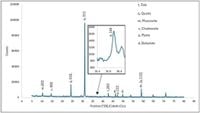Mining operations worldwide are increasingly looking toward the reprocessing of mine tailings for valuable resources, particularly gold. Recent research focused on developing an effective method to quantify gold that can be obtained from these tailings, revealing significant advancements in both speed and environmental sustainability. A recently published study explores the use of a shorter acid digestion method employing reverse aqua regia, claiming it offers a viable solution to the limitations posed by traditional methods.
The typical approach for determining gold content in tailings involves using fire assays, known for their accuracy but also for being labor-intensive and utilizing hazardous materials such as lead. This poses challenges not only for human health but also raises questions regarding the environmental impact of mining activities. The new methodology proposed by researchers from the National Research Foundation and Mintek employs reverse aqua regia in varying conditions—both with and without hydrofluoric acid—to assess its precision and efficacy in quantifying gold levels.
The researchers found that, in samples analyzed, 78% of the gold was free-milling, significantly improving recovery prospects. Only a minimal 0.8% was found to be associated with minerals like pyrite, which often complicates extraction processes. Details from size screening tests indicated that gold recovery was highest for particles smaller than 38 micrometers, ensuring optimal conditions for successful analysis.
The acid digestion method under study demonstrated impressive linearity across a concentration range of 5 to 100 µg.L−1, with detection limits ranging from 0.139 to 0.183 µg.kg−1. This level of sensitivity is essential for accurately quantifying gold levels, particularly in low-grade deposits. The concentration values obtained through digestion were calculated at 0.258 g.t−1, with gold recoveries fluctuating between 80% and 82%. Crucially, the proposed method also performed admirably against certified reference materials with values matching or closely approximating expected results, further validating its reliability.
In the new study, the researchers noted that the acid digestion method yielded results comparable to those derived from fire assays. The expanded uncertainty for the acid digestion was reported at 0.258 ± 0.092 g.t−1, closely aligning with the traditional method's uncertainty of 0.28 ± 0.10 g.t−1. In practical terms, this means that the reverse aqua regia method could serve as an effective alternative, reducing both time and environmental hazards associated with typical fire assays, requiring only a sample mass of 1 gram and a digestion time of just 20 minutes.
Understanding the mineral composition of tailings is critical to enhancing recovery methods. The dominant mineral detected was quartz, which comprised approximately 80% by weight of the tailings. Notably, its presence indicates challenges related to processing, as quartz is known to encapsulate gold, making extraction difficult. However, preliminary findings suggested that traditionally encountered barriers were surmountable, with adequate recoveries regardless of the presence of hydrofluoric acid.
A paired t-test further affirmed that the new acid digestion method did not show significant difference in results when compared to fire assay methods, indicating its potential viability for industrial applications. This discovery opens avenues for increased efficiency in gold recovery efforts, benefiting both environmental standing and economic gain for mining operations.
The team’s findings highlight the potential of alternative methods in the mining sector, paving the way for a future where hazardous processes can be minimized. As the drive for sustainability continues to redefine mining practices, innovative approaches such as the reverse aqua regia technique signify a step towards environmentally responsible resource extraction.
In conclusion, this study showcases a promising new method for quantifying gold in mine tailings that balances efficiency and safety, while offering a strong alternative to current practices. The approach not only allows for effective gold recovery but also aligns with broader environmental goals within the mining sector.




